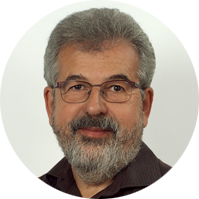Rock Art in Oman
Everywhere in the country -- in remote wadis, caves, but also on old walls, for example, on the walls of Jabrin palace -- one can find incised drawings whose age can be estimated to range from a few hundred years old to pre-Christian centuries. In innumerable places there are displays of human beings, animals, and objects, such as weapons, as well as plenty of text. The content is as rich as life, from personal utterances up to historical chronicles. For the historically interested, a real treasure trove.
Without knowledgeable local guides, they are hard to find, let alone interpret the writings. Most drawings were created on natural stone, isolated from other cultural legacies, which would enable dating.
At this point, we would refer you to the important and passionate work of Ali Ahmed Al Shahri (in south Oman) and Harith Saif Al Kharoosi (in north Oman).
Below are a few examples mentioned.
Near Bilad al Sait at Al Hamra is situated a bluff with rock drawings, named Coleman's Rock after its "discoverer" (but it must be assumed that these representations were known to the native population from time immemorial), which can be seen especially in the morning light as a detailed human relief drawing. Its age is unknown. It is interpreted by locals in the context of a legend about people being trapped in a rock. Unfortunately, this unique depiction was partially damaged a few years ago in destructive ignorance.
Musandam: At the hidden village of Tawi, in a side valley near the small town of Khasab in Musandam, on the left side of the road are boulders with many petroglyphs from different centuries. Until some time ago they were in a cave in the rock face, until the masses of rock fell down into the valley and uncovered it. For this reason, most of them have been weathered little and are easily recognizable.
Dhufar: To be seen in Samharam is the panel, now broken in two, whose inscription gives information about the origins of the town and its founding by King Asadum Talan from the Yemeni Shabwa. Its content was misinterpreted in part, but the French scientist Jacqueline Pirennenach deciphered it based on the Hadramaut dialect.
Are you interested in a trip to Oman?
► Explore Oman with ARABIA FELIX
Your contacts for travels at Arabia Felix:
Maria Popp, Karin Nowack und Georg Popp
✆ Tel.: +49 (0)89 / 30 77 92 00
✉ info@oman.de



